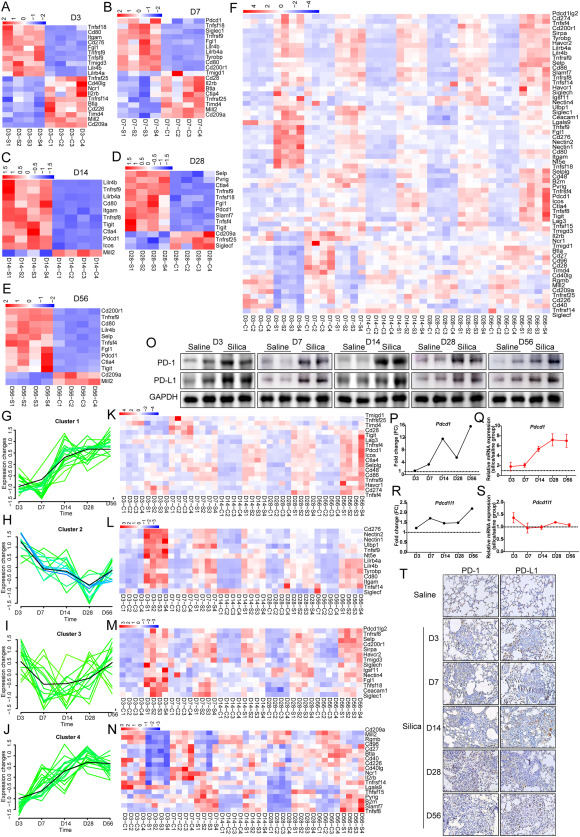
Time-series transcriptome analysis mapping pulmonary immune checkpoint atlas of experimental silicosis


Silicosis is a chronic interstitial lung disease caused by prolonged exposure to inhalable silica particles. The initiation and progression of silicosis involve a dynamic process encompassing various cell types and molecules. Although the effector cells in different stages of silicosis undergo constant switching with disease progression, immune cells play a dominant role throughout the entire process.1 Therefore, comprehensively exploring cellular and molecular mechanisms underlying immune responses in silicosis becomes a prerequisite for unraveling its pathogenesis. Immune checkpoints (ICs) are crucial immunomodulatory factors that contribute significantly to the maintenance of immune tolerance and homeostasis.2 Our previous studies have also demonstrated that the development of experimental silicosis is accompanied by dysregulation of IC expression.3 Therefore, a systematic description of the dynamic expression profile of ICs in silicosis can provide a basis for subsequent experimental research. In this study, we established a mouse model of silicosis and collected lung tissue samples at various stages for transcriptome sequencing analysis. By integrating bioinformatics analysis techniques with time series-based trend analysis, we mapped out pulmonary IC atlas to highlight the critical role played by ICs in orchestrating immune responses at distinct stages of silicosis progression.
